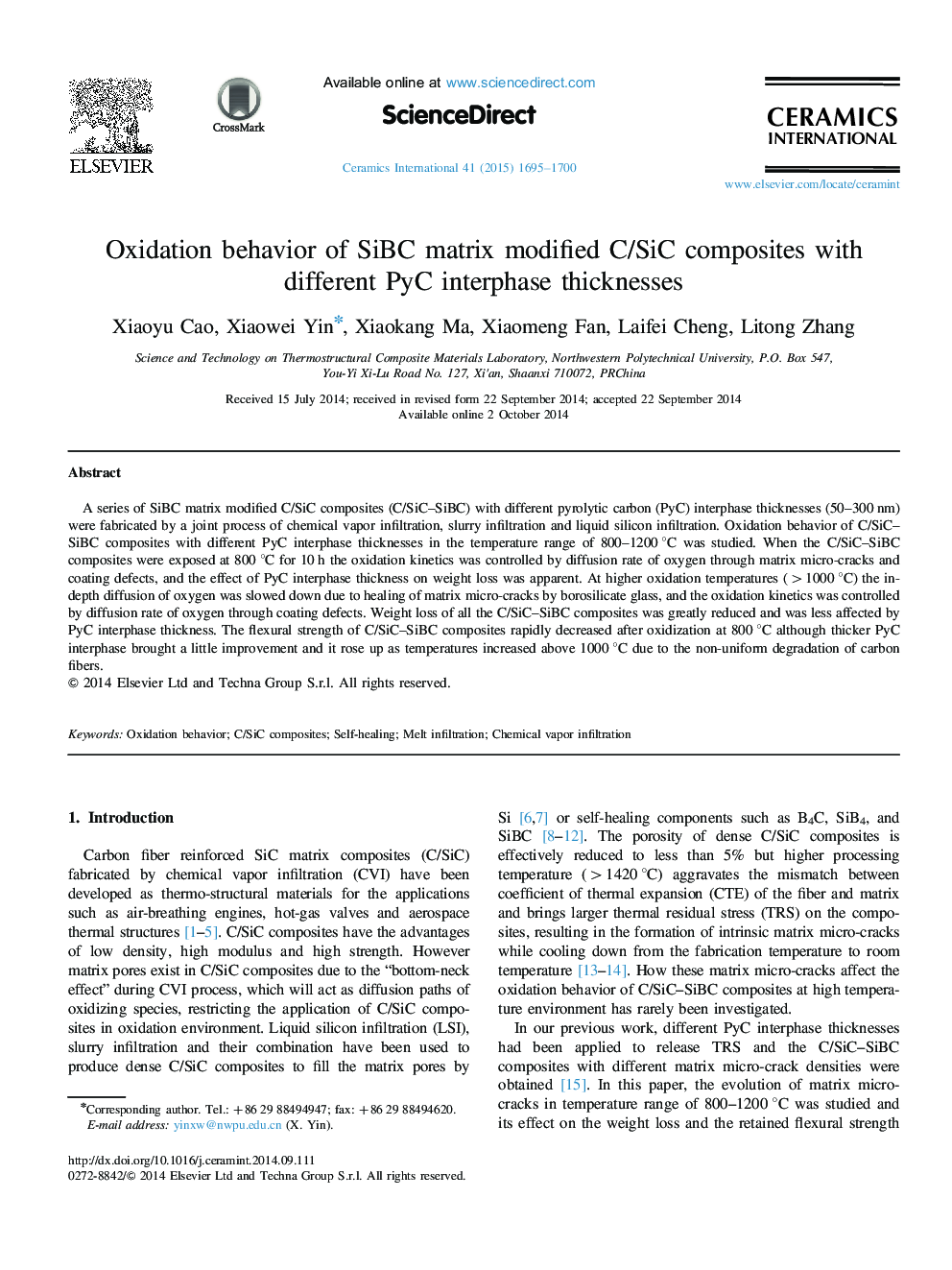| Article ID | Journal | Published Year | Pages | File Type |
|---|---|---|---|---|
| 1460876 | Ceramics International | 2015 | 6 Pages |
A series of SiBC matrix modified C/SiC composites (C/SiC–SiBC) with different pyrolytic carbon (PyC) interphase thicknesses (50–300 nm) were fabricated by a joint process of chemical vapor infiltration, slurry infiltration and liquid silicon infiltration. Oxidation behavior of C/SiC–SiBC composites with different PyC interphase thicknesses in the temperature range of 800–1200 °C was studied. When the C/SiC–SiBC composites were exposed at 800 °C for 10 h the oxidation kinetics was controlled by diffusion rate of oxygen through matrix micro-cracks and coating defects, and the effect of PyC interphase thickness on weight loss was apparent. At higher oxidation temperatures (>1000 °C) the in-depth diffusion of oxygen was slowed down due to healing of matrix micro-cracks by borosilicate glass, and the oxidation kinetics was controlled by diffusion rate of oxygen through coating defects. Weight loss of all the C/SiC–SiBC composites was greatly reduced and was less affected by PyC interphase thickness. The flexural strength of C/SiC–SiBC composites rapidly decreased after oxidization at 800 °C although thicker PyC interphase brought a little improvement and it rose up as temperatures increased above 1000 °C due to the non-uniform degradation of carbon fibers.
